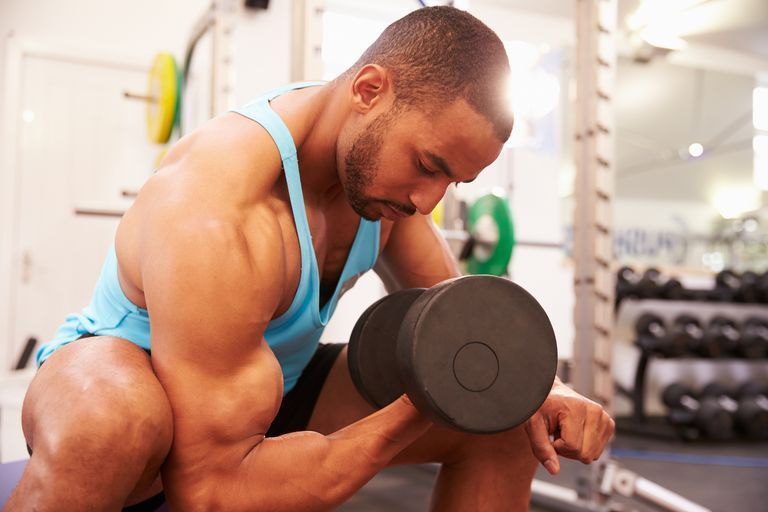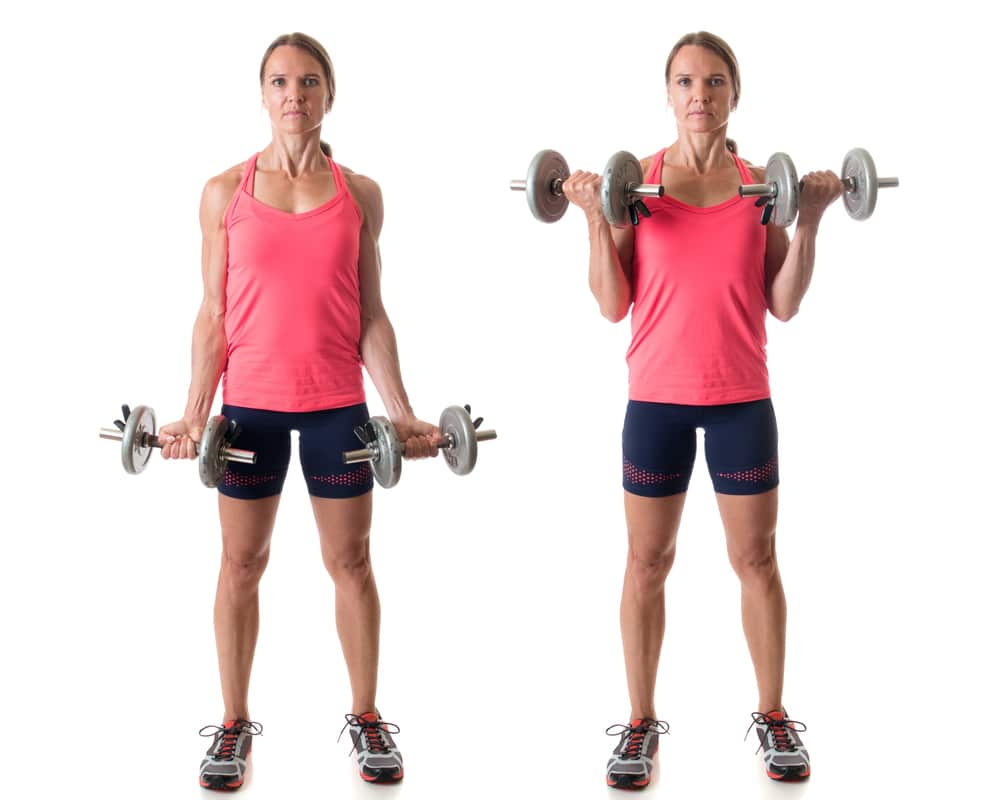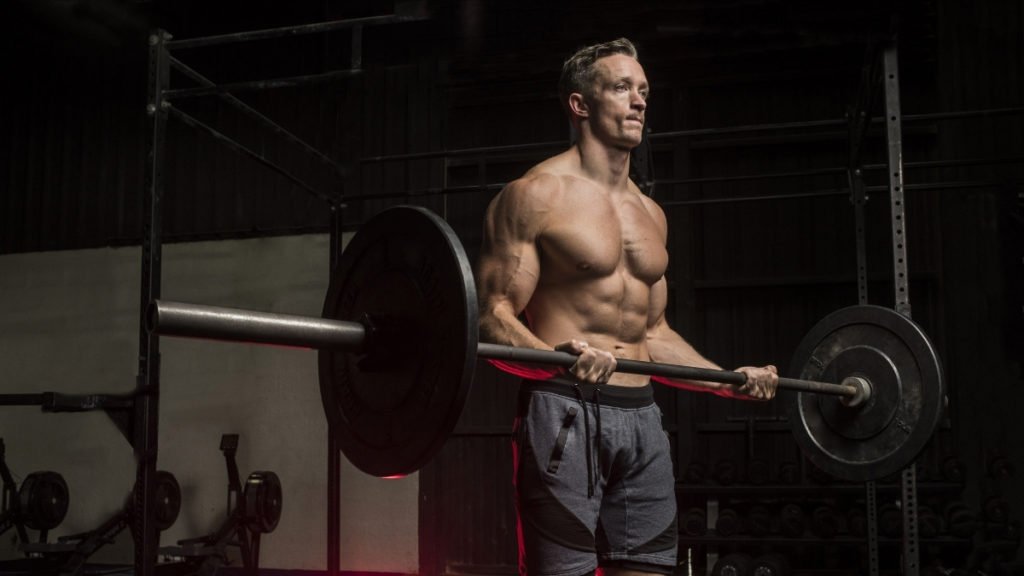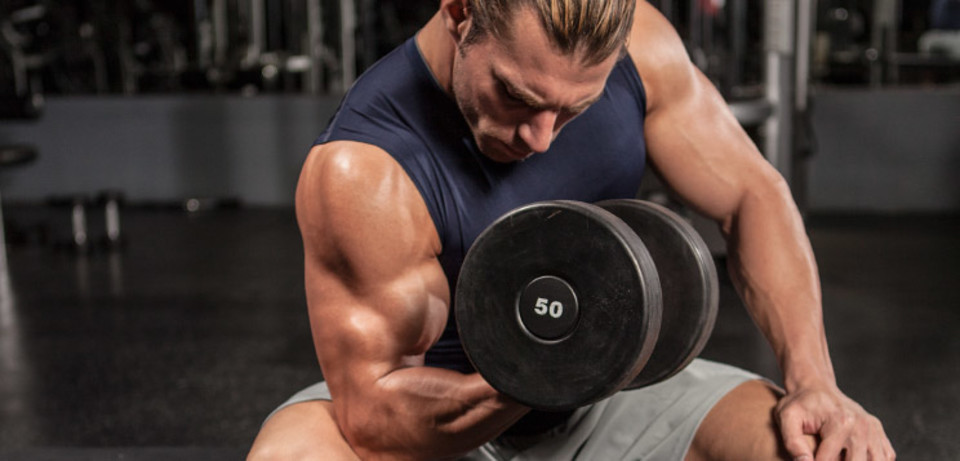
Biceps barbell flexion is a basic, isolating, pull-up exercise for the biceps. It is a folding of the arms at the elbows, leaving the other joints immobile. Different types of levers are used, each of which gives characteristic features of the performance.
The exercise is suitable for beginners, intermediate and advanced fitness and bodybuilding enthusiasts. Trainers with the goal of fitness and tone can derive functional benefits from its inclusion in their program. It is important for beginners to remember that the weight should be raised only when the technique is completed with a lower weight.
Contraindications
Trainers who have injuries to the shoulders, shoulder girdle, elbows, wrists, forearms or lower back should perform the exercise with caution. People with disc herniations can perform the exercise leaning against a wall.
Participating muscles
Dynamists
- Biceps brachii
Synergists
- Brachialis anticus
- Brachioradialis
Extras and dynamic stabilizers
- Shoulder muscles, front heads (Deltoid, Anterior)
- Wrist flexors
- Trapezius muscles, upper and middle part (Trapezius upper and middle)
- Shoulder lifters (Levator scapulae)
- Rectus abdominis
- Oblique abdominal muscles (Obeliques)
- Long spinal muscles (Erector spinae)
- Large gluteus maximus
- Quadriceps
- Calves (Gastrocnemius)
- Large pectoral muscles (Pectoralis major)

Folding according to the type of grip, the width of the grip and the handle
- With a grip – loads the flexors of the forearms, a slight emphasis on the inner heads.
- With a semi-approach with EZ lever – power grip, includes more brachialis.
- With a parallel grip – force grip, includes largely brachialis and brachioradialists.
- With a narrow grip – the elbows are wider than the wrists, the emphasis is on the outer heads.
- With shoulder grip – with elbows and wrists in one width, this is the ideal width for strength performances. There is no specific emphasis, the load is evenly distributed.
- With a wide grip – the elbows are deeper than the wrists. Clear emphasis on the inner heads.
- With dynamic grip – many different combinations are possible. We will consider specific options in the future in separate articles.
Preparation and implementation
- Load the lever with the desired weight, put tensioners.
- Remove the lever from the full body stand, lean forward slightly and tighten the abdomen.
- The legs are open and firmly planted on the floor. Pull your shoulders back slightly and press your shoulders together so that they do not allow the shoulders to move forward freely.
- Slowly bend your arms without changing the position of your elbows, keeping your armpits upright.
- After fully folding the arms at the elbows, slowly return to the starting position.
- Repeat until the end of the series.
Recommendations
- Bend at the elbow joints, trying to move as little spine, shoulders and shoulder girdle as possible.
- Do not move the bar away from the line of your body, remember that you are folding, not lifting!
- If you have chosen to use false movements, consider what type of cheating to use: pelvic swing, back assistance (back swing), shoulder rotation, and / or squatting to overcome a critical point. Practice cheating movements with light weights, do not try to learn them the hard way, ie. with trial and error.
- Unfold completely, unless you are looking for partial performances.
Biceps barbell bending is a basic exercise for the biceps, so it is almost always present in fitness and bodybuilding training schemes for amateurs. Usually between two separate programs the trainees change its variants (grips). It is less common to remove it from the forehead in favor of biceps flexion with dumbbells or biceps flexion of the lower pulley.
In strength-conditioning techniques, biceps barbell bending is often seen as the only and sufficiently isolated biceps exercise. In strength-conditioning training schemes, this type of isolating movements for small muscle groups are of a secondary nature. The place of the biceps flexion in such a scheme is at the end of the workout.


